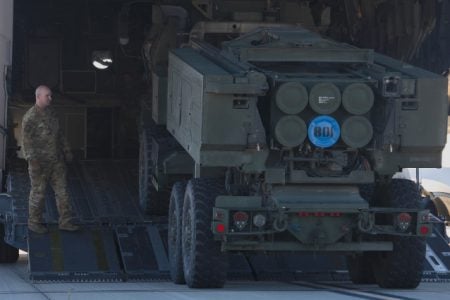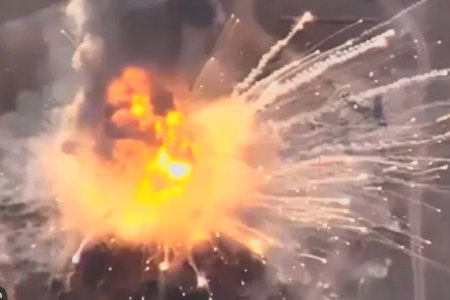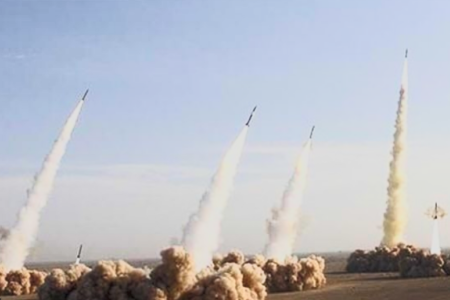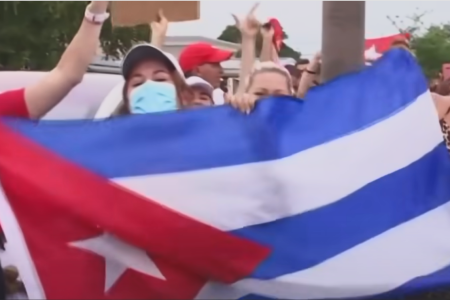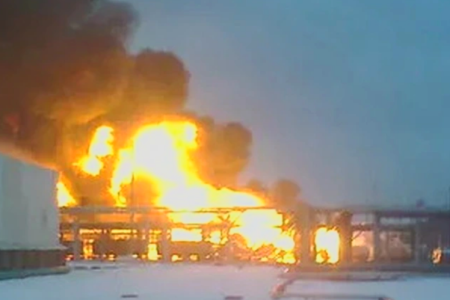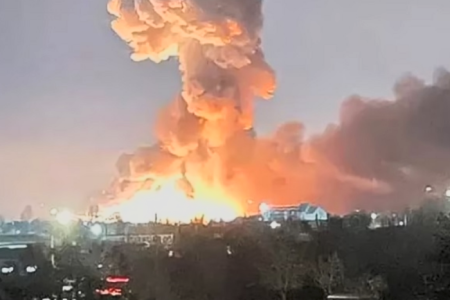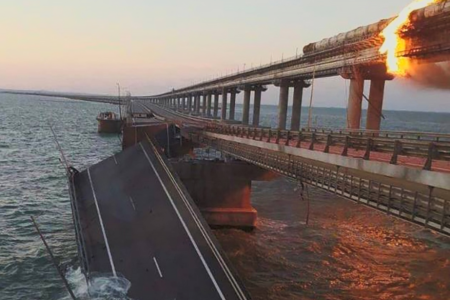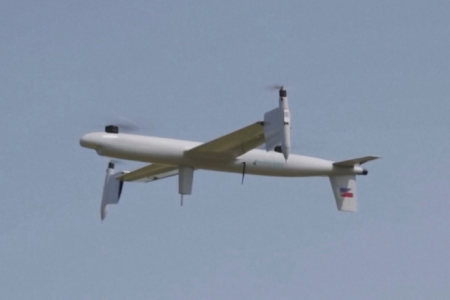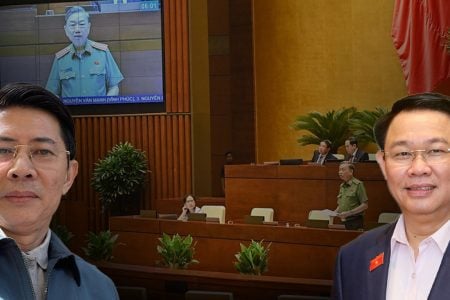Vietnam has sent a note to the United Nations to oppose China’s sovereignty claims in the East Sea (South China Sea). According to observers, this move could be a prelude to a legal process in the near future if Hanoi and Beijing cannot resolve disputes multilaterally.
The note sent by the Vietnamese permanent mission to the UN Secretary General Antonio Guterres said that China’s sovereignty claims “seriously violat Vietnam’s sovereignty, sovereignty and jurisdiction” in the East Sea.”
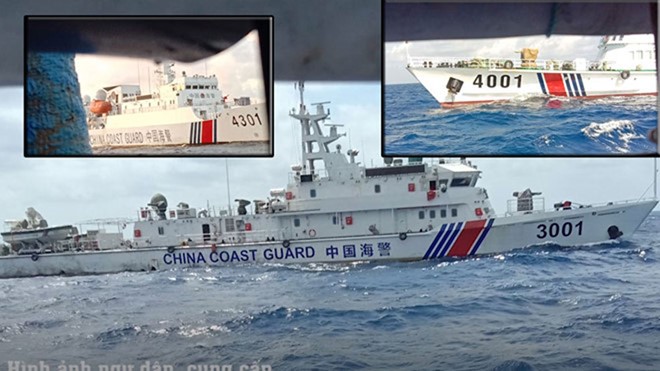
Affirming the UN Convention on the Law of the Sea 1982 is the only legal basis and comprehensive provisions on the scope of maritime entitlement between Vietnam and China, Vietnam’s diplomatic note said “the region the sea of floating structures in the Hoang Sa (Paracels) and the Truong Sa (Spratlys) must be determined in accordance with Article 121 (3) of the Convention; island groups in the South China Sea, including the Paracels and Spratlys, have no baseline drawn by connecting the outermost points of the furthest structures; reefs or floating structures are not territorial beneficiaries and do not have their own seas.”
On April 7, many Vietnamese newspapers reported on Vietnam’s new move, in which the website of VTC channel of Vietnam said: “Vietnam opposes China’s demands at its diplomatic note. These claims seriously violate Vietnam’s sovereignty, sovereignty and jurisdiction in the East Sea.” “The Vietnamese delegation to the UN once again reaffirmed its consistent stance on the above issues that have been affirmed in many circulating documents at the UN and submissions and declarations to relevant international authorities. The Mission also asked the UN Secretary-General to circulate this note to all states parties to the Convention, as well as all members of the UN,” VTC wrote.
Vietnam’s note was sent after the two countries in the region, the Philippines and Malaysia, had similar moves.
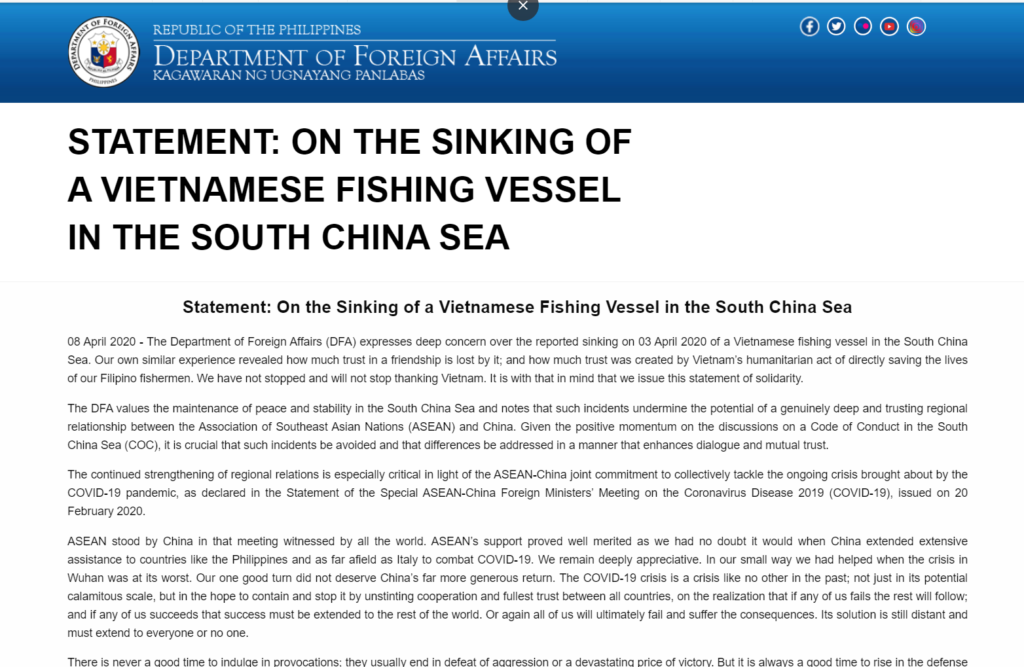
On April 8, the Philippine Department of Foreign Affairs issued a statement on the Vietnam Fishing Boat Sinking in the East Sea as follows: “The Ministry of Foreign Affairs expressed deep concern about the reported incident of the Vietnamese ship’s sinking in South China Sea on April 3, 2020. Our similar experience shows how trust in friendship has been lost through such an incident; and how much faith has been created by Vietnam’s humanitarian actions that directly save the lives of our Filipino fishermen. We have not stopped and will not stop thanking Vietnam. Therefore, we issue this statement to show solidarity.”
According to Dr. Ha Hoang Hop, security and political researcher of the ISEAS Institute of Southeast Asian Studies, based in Singapore, sending the official note to the UN can be seen as a “very important” and “necessary” step that Hanoi implemented after decades of neighboring countries carried out a series of activities to change the status quo in the East Sea.
“Vietnam has almost never told the UN about this before, because it is obvious that the UN has assigned Vietnam to manage this part of the East Sea since 1951, after Japan and some other countries have to carry out procedures from claim sovereignty in the East Sea,” PhD. Ha Hoang Hop said.
According to this researcher, it can be considered sending the diplomatic note to the UN as the first step for a Vietnamese lawsuit to go international against China’s sovereignty claim in the East Sea.
Hop further explained: “It is understandable because in 2019, the Communist Party of Vietnam in its plenum discussed and decided that in case it cannot be solved by means of talks with China it will have to sue China.”
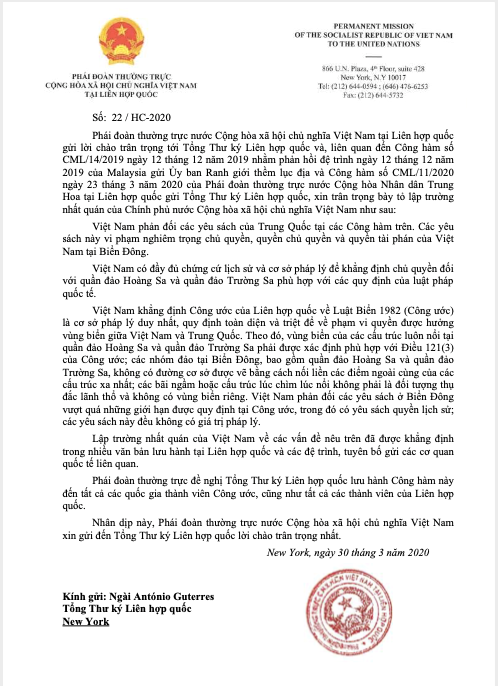
Vietnam’s note was only released on April 7, although it was sent on March 30, that is, before the latest incident, a Chinese coast guard sank a Vietnamese fishing boat. On April 2, Hanoi immediately spoke out and sent a diplomatic note to Beijing, while the Chinese side said that Vietnamese fishing vessels were illegally fishing and the sinking was an accident.
The latest conflict has also prompted the United States to defend Vietnam and criticize China’s stressful actions towards regional security, especially in the context of the world struggling for the Covid-19 pandemic.
According to the judgment of Dr. Hop, Hanoi’s announcement of the diplomatic note in the Vietnamese version after the shipwreck happened, probably due to “pressure from the public.”
“This is a very serious incident. It happened after March 30, the day the UN’s Viet Nam Permanent Representative sent a protest letter to the UN Secretary General. Perhaps for that reason, they considered publishing this letter to let the Vietnamese know that they have acted in such a way,” Dr. Hop said.
Based on the content of the function, Dr. Hop said that maybe Hanoi’s upcoming legal direction would be to file a lawsuit with a UN tribunal or a court against China’s sovereignty claim in the East Sea, similarly as the Philippines did and won in 2016.
However, before this final step can be taken, Hanoi may take some previous steps, Hop said: “Next, Vietnam will meet with China to discuss whether it can be handled negotiation, not bilateral but multilateral.”
“Second, Vietnam must organize for ASEAN to negotiate with China on Code of Conduct in the East Sea (COC). Because this year Vietnam is the rotating chair of ASEAN, it must continue until November.”
If the ASEAN meeting on COC cannot be done in July due to COVID-19 epidemic, then it is possible that the bloc of Southeast Asian countries will hold online meetings or postpone them. However, so far, no decision about this has been made.

Still according to this researcher, the ruling of the Permanent Court of Arbitration in 2016 in the Philippines case rejected the U-shaped line (9-dash line) that China claims its sovereignty over the East Sea, and This ruling was not only for Manila but “it was a universal ruling.” “But Vietnam at that time was limbo,” said Dr. Hop.
According to him, this is the time when Vietnam “needs to make it clear” and take a decisive step in the context that China has changed the status quo too much in the East Sea in the direction of militarization to prepare for war.
Dr. Dinh Hoang Thang (former ambassador of Vietnam to the Netherlands) said: “Denouncing those actions to the UN, the spokesman of the Ministry of Foreign Affairs of Vietnam in such a rare occasion, dared to name the responsibility directly for China, not ‘a foreign country’ anymore. Although it has not fully reflected the public’s hearts, it hopes that it will no longer see the government having to force its forces to suppress peaceful protests and denounce China’s crimes in previous wars and actions in the East Sea.”
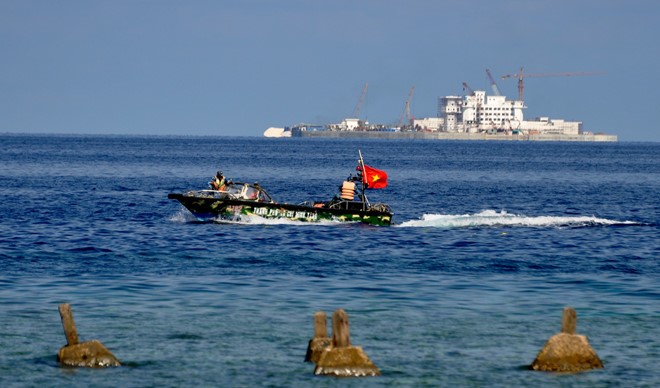
Associate Professor Hoang Ngoc Giao (Director of the Institute of Policy, Law and Development) said that this is a firm and timely step of the Vietnamese government.
Also thinking that this was the right decision at the right time, Dr. Thang added: “Firstly, Vietnam is preparing the Party Congress, China wants to pressure, especially on the candidates for senior posts. Here, Vietnam responds right away to tell China that anyone in this framework cannot kneel before China.
Kneeling in front of China is losing votes, and more importantly, the information on surrendering to China, will remain for forever.
Secondly, in the middle of Covid-19 outbreak, the world understands China better, has the opportunity to confirm actions against civilians that even in the international law war also prohibit the parties in the war.
After the fuss between China and many countries about the origin of the viruscorona, especially after the speculations of masks and medical equipment of China, Vietnam and the world have the opportunity to learn more about the bad behaviors of Chinese authorities.
Third, China said that now is the time the US, Vietnam and the world are focusing on fighting pandemics, so they are free to “dance in the wild“. If Vietnam does not take legal action now, when it will take firm actions to deal with China’s violations in the East Sea?
“Fourth, this may be a ‘stepping stone’ on the path of using international law to speak to the contrary with China.
Everyone knows the reaction of the United States. Here must be added that the US is increasingly assertive with the act of bullying small countries of China, the language of the statement is quite strong: Supporting Vietnam’s sovereignty (this is not the first time), reject China’s tongue line (this repeats the CPA’s ruling). However, it should not be assumed that the United States defends Vietnam.
Japan, India, Australia and Europe have had a united voice on the East Sea issue. This time it could not be different.
This is an “diamond” opportunity (not just gold) for Vietnam. US President Donald Trump’s strategy of “Free and Open Indo-Pacific” (FOIP) is a unique opportunity in the history of Vietnam and the region when ASEAN has to deal with each other at the same time relations between major countries in the region.
If China can squeeze Vietnam, it will not forgive any other countries in the bloc,” Dr. Thang concluded.
China has been invading Vietnam’s territorial sea since 1974, when its army attacked the Hoang Sa under control of the Republic of Vietnam. In 1988, China again attacked and killed 64 Vietnamese People’s Army soldiers and took control over Gac Ma (South Johnson reef). Since then, China has continuously increased the number of intrusive ships and long-term operations in Vietnam’s exclusive economic zone that it considers to be China’s territorial sea since ancient times with a nine-dash line. cow’s tongue line.
To solve this problem, Vietnam needs to sue China in an international court soon to get the final result, which is a judgment of the Court that both sides must enforce.
Hoang Trung from Hanoi – Thoibao.de (Translated)




